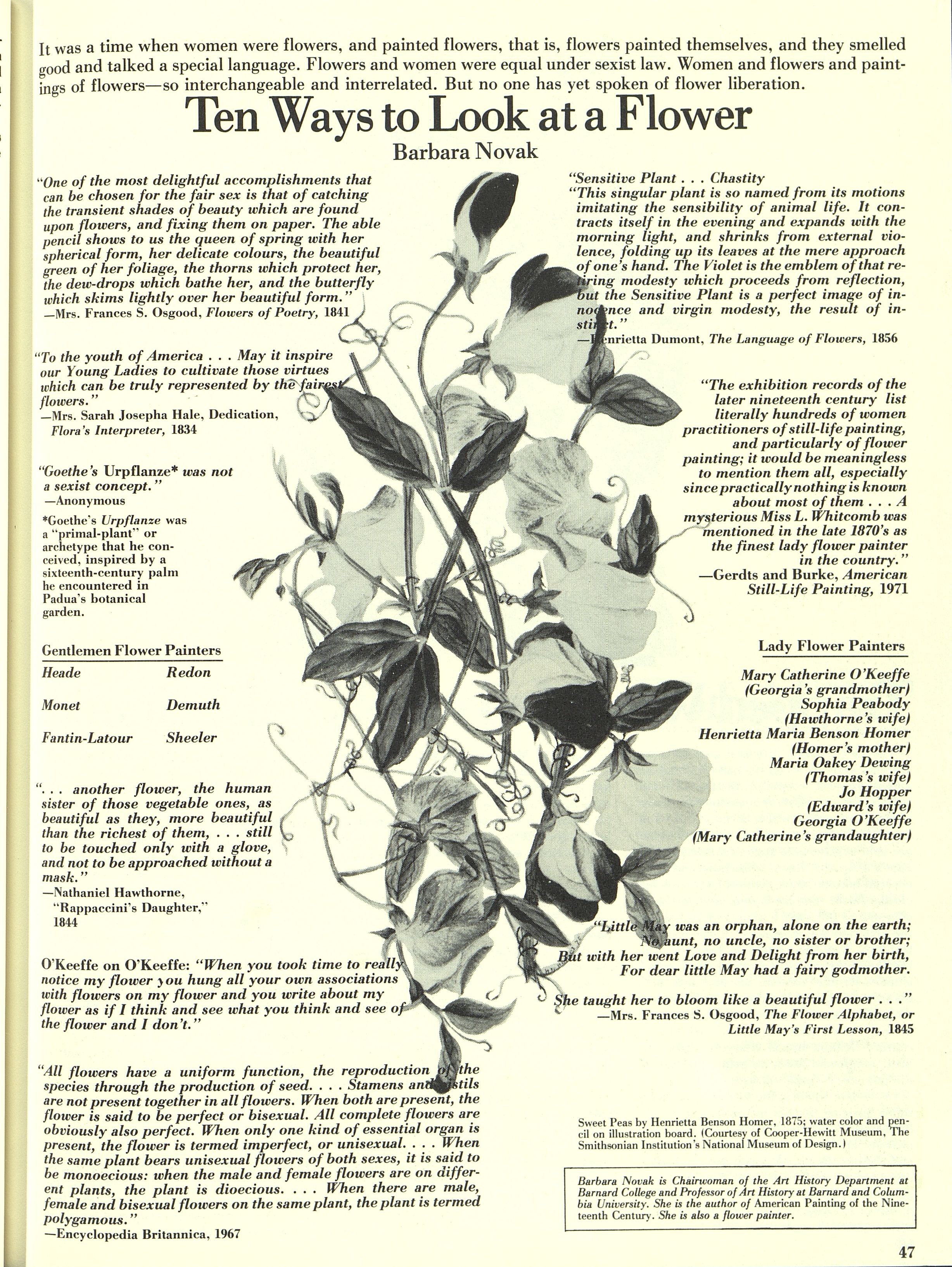View the Issue
Read the Texts
Mexican Folk Pottery
Editorial Statement
The Aesthetics of Oppression
Is There a Feminine Aesthetic?
Quilt Poem
Women Talking, Women Thinking
The Martyr Arts
The Straits of Literature and History
Afro-Carolinian "Gullah" Baskets
The Left Hand of History
Weaving
Political Fabrications: Women's Textiles in Five Cultures
Art Hysterical Notions of Progress and Culture
Excerpts from Women and the Decorative Arts
The Woman's Building
Ten Ways to Look at a Flower
Trapped Women: Two Sister Designers, Margaret and Frances MacDonald
Adelaide Alsop Robineau: Ceramist from Syracuse
Women of the Bauhaus
Portrait of Frida Kahlo as a Tehuana
Feminism: Has It Changed Art History?
Are You a Closet Collector?
Making Something From Nothing
Waste Not/Want Not: Femmage
Sewing With My Great-Aunt Leonie Amestoy
The Apron: Status Symbol or Stitchery Sample?
Conversations and Reminiscences
Grandma Sara Bakes
Aran Kitchens, Aran Sweaters
Nepal Hill Art and Women's Traditions
The Equivocal Role of Women Artists in Non-Literate Cultures
Women's Art in Village India
Pages from an Asian Notebook
Quill Art
Turkmen Women, Weaving and Cultural Change
Kongo Pottery
Myth and the Sexual Division of Labor
Recitation of the Yoruba Bride
"By the Lakeside There Is an Echo": Towards a History of Women's Traditional Arts
Bibliography
Barbara Novak
It was a time when women were flowers, and painted flowers, that is, flowers painted themselves, and they smelled good and talked a special language. Flowers and women were equal under sexist law. Women and flowers and paintings of flowers—so intererchangeable and interrelated. But no one has yet spoken of flower liberation.
"One of the most delightful accomplishments that can be chosen for the fair sex is that of catching the transient shades of beauty which are found upon flowers, and fixing them on paper. The able pencil shows to us the queen of spring with her spherical form, her delicate colours, the beautiful green of her foliage, the thorns which protect her, the dew-drops which bathe her, and the butterfly which skims lightly over her beautiful form." –Mrs. Frances S. Osgood, Flowers of Poetry, 1841
"To the youth of America... May it inspire our Young Ladies to cultivate those virtues. which can be truly represented by the fairest flowers." Mrs. Sarah Josepha Hale, Dedication, Flora’s Interpreter, 1834 "Goethe's Urpflanze* was not a sexist concept." —Anonymous *Goethe's Urpflanze was a "primal-plant" or archetype that he conceived, inspired by a sixteenth-century palm he encountered in Padua's botanical garden.
Gentlemen Flower Painters
|
Heade |
Redon |
|
Monet |
Demuth |
|
Fantin-Latour |
Sheeler |
".. another flower, the human sister of those vegetable ones, as beautiful as they, more beautiful than the richest of them,... still to be touched only with a glove, and not to be approached without a mask." —Nathaniel Hawthorne, "Rappaccini’s Daughter," 1844
O’Keeffe on O’Keeffe: "When you took time to really notice my flower you hung all your own associations with flowers on my flower and you write about my flower as if I think and see what you think and see of the flower and I don't."
“All flowers have a uniform function, the reproduction of the species through the production of seed.... Stamens and pistils are not present together in all flowers. When both are present, the flower is said to be perfect or bisexual. All complete flowers are obviously also perfect. When only one kind of essential organ is present, the flower is termed imperfect, or unisexual.... When the same plant bears unisexual flowers of both sexes, it is said to be monoecious: when the male and female flowers are on different plants, the plant is dioecious.... When there are male, female and bisexual flowers on the same plant, the plant is termed polygamous." —Encyclopedia Britannica, 1967
"Sensitive Plant... Chastity "This singular plant is so named from its motions imitating the sensibility of animal life. It contracts itself in the evening and expands with the morning light, and shrinks from external violence, folding up its leaves at the mere approach of one's hand. The Violet is the emblem of that retiring modesty which proceeds from reflection, but the Sensitive Plant is a perfect image of innocence and virgin modesty, the result of instinct." Henrietta Dumont, The Language of Flowers, 1856
The exhibiition records of the later nineteenth century list literally hundreds of women practitioners of still-life painting, and particularly of flower painting; it would be meaningless to mention them all, especially since practically nothing is known about most of them ... A mysterious Miss L. Whitcomb was mentioned in the late 1870's as the finest lady flower painter in the country." Gerdts and Burke, American Still-Life Painting, 1971
Lady Flower Painters
- Mary Catherine O’Keeffe (Georgia’s grandmother)
- Sophia Peabody (Hawthorne’s wife)
- Henrietta Maria Benson Homer (Homer's mother)
- Maria Oakey Dewing (Thomas's wife)
- Jo Hopper (Edward's wife)
- Georgia O'Keeffe (Mary Catherine's grandaughter)
"Little May was an orphan, alone on the earth; No. aunt, no uncle, no sister or brother; But with her went Love and Delight from her birth, For dear little May had a fairy godmother. She taught her to bloom like a beautiful flower..." –Mrs. Frances S. Osgood, The Flower Alphabet, or Little May’s First Lesson, 1845
Sweet Peas by Henrietta Benson Homer, 1875; water color and pencil on illustration board. (Courtesy of Cooper-Hewitt Museum, The Smithsonian Institution’s National Museum of Design.)
Barbara Novak is Chairwoman of the Art history Department at Barnard College and Professor of Art History at Barnard and Columbia University. She is the author of America Painting of the Nineteenth century. She is also flower painter.

